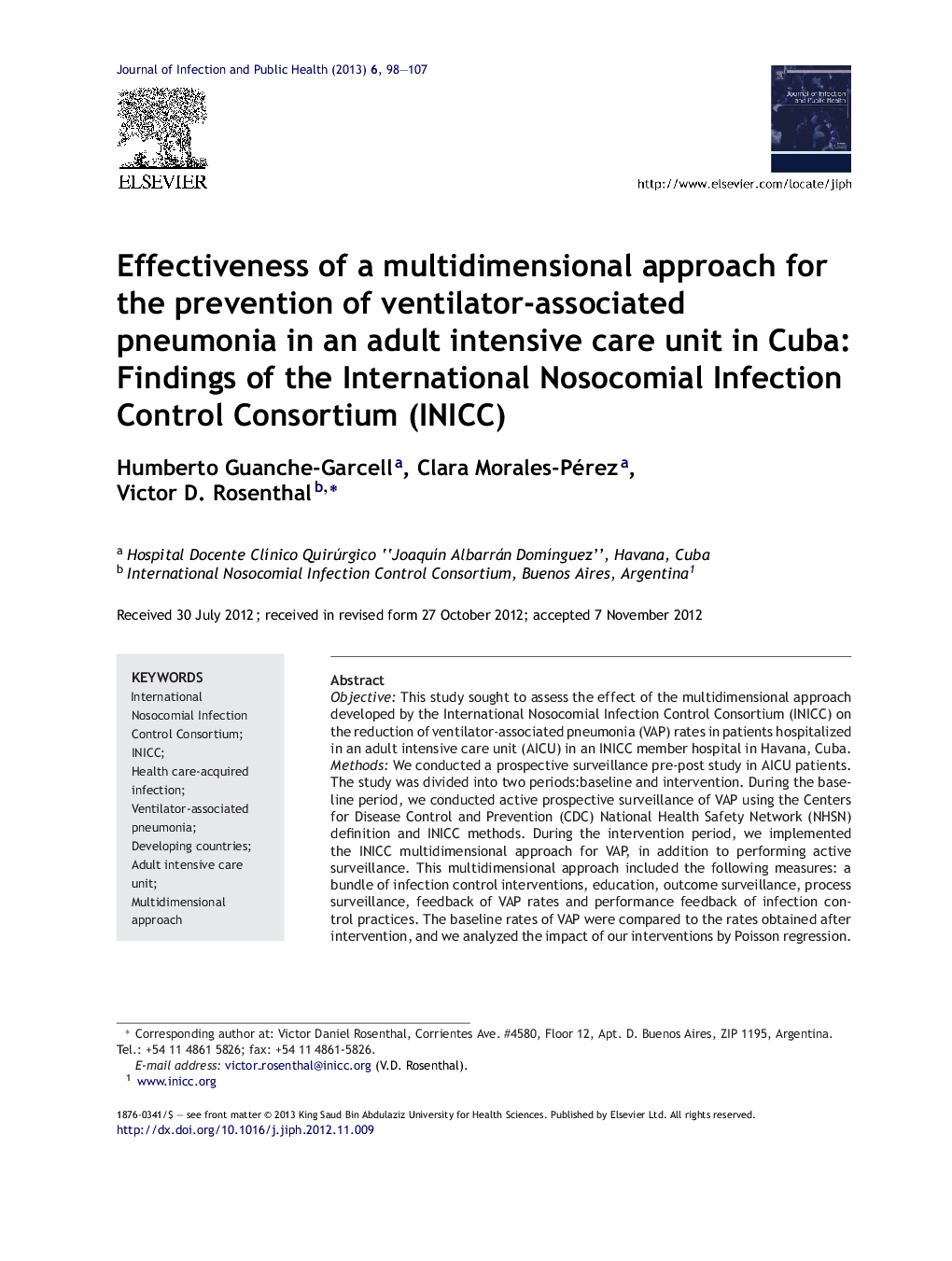| Article ID | Journal | Published Year | Pages | File Type |
|---|---|---|---|---|
| 3405883 | Journal of Infection and Public Health | 2013 | 10 Pages |
ObjectiveThis study sought to assess the effect of the multidimensional approach developed by the International Nosocomial Infection Control Consortium (INICC) on the reduction of ventilator-associated pneumonia (VAP) rates in patients hospitalized in an adult intensive care unit (AICU) in an INICC member hospital in Havana, Cuba.MethodsWe conducted a prospective surveillance pre-post study in AICU patients. The study was divided into two periods:baseline and intervention. During the baseline period, we conducted active prospective surveillance of VAP using the Centers for Disease Control and Prevention (CDC) National Health Safety Network (NHSN) definition and INICC methods. During the intervention period, we implemented the INICC multidimensional approach for VAP, in addition to performing active surveillance. This multidimensional approach included the following measures: a bundle of infection control interventions, education, outcome surveillance, process surveillance, feedback of VAP rates and performance feedback of infection control practices. The baseline rates of VAP were compared to the rates obtained after intervention, and we analyzed the impact of our interventions by Poisson regression.ResultsDuring the baseline period, we recorded 114 mechanical ventilator (MV) days, whereas we recorded 2350 MV days during the intervention period. The baseline rate of VAP was 52.63 per 1000 MV days and 15.32 per 1000 MV days during the intervention. At the end of the study period, we achieved a 70% reduction in the rate of VAP (RR, 0.3; 95% CI, 0.12–0.7; P value, 0.003.).ConclusionsThe implementation the INICC multidimensional approach for VAP was associated with a significant reduction in the VAP rate in the participating AICU of Cuba.
► We implemented a multidimensional ventilator-associated pneumonia approach in a Cuban intensive care unit. ► It included systematic surveillance, a bundle of measures, education, and feedback. ► Baseline ventilator-associated pneumonia rate was compared to the post-intervention rate. ► We analyzed the impact of our interventions by Poisson regression. ► Our approach was associated with a 70% reduction in the ventilator-associated pneumonia rate.
